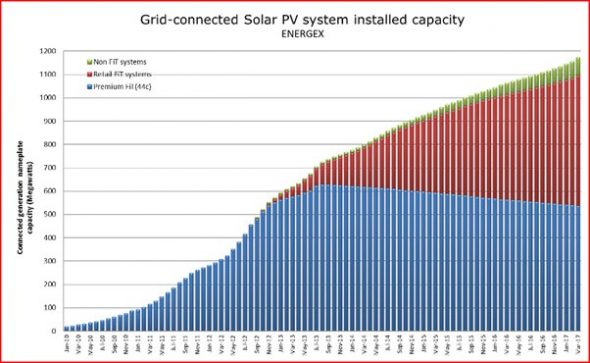There’s never been a better time to start investigating solar energy in New South Wales – this week a federal court has blocked regulatory efforts to curb power price rises in NSW. Residential bills are set to soar even higher in the face of already over-inflated prices.
Power Price Rises in NSW
The Australian Energy Regulator (AER) argued in court that the NSW electricity distribution businesses (pole and wire companies like Ausgrid and Endeavour Energy) were inefficient (the cost of transporting electricity from station to house consists of approximately 40% of your bill). This 40% made up the majority of the AER’s ongoing (since 2015) complaints to the Australian Competition Tribunal and subsequently the Federal Court on appeal.

According to the Australian Financial Review, the loss of this court case means that average households will face an increase of around $100 per year. Ausgrid have advised that average household electricity prices will raise by 1.5% or $11 a year for the next six years. Evidently the actual figure remains to be seen.
Since the 99-year lease for 50.4% of Ausgrid (the electricity infrastructure company which owns, maintains and operates the electrical distribution networks for 1.6m NSW residents) was sold to IFM Investors and AustralianSuper in October 2016, concern about already high energy prices has been growing. This court decision will result in a windfall of billions of dollars for the new investors of Aussgrid and Endeavour Energy. Other companies set to benefit include Jemena (who own ActewAGL) and will set a dangerous precedent for the rest of Australia.
Ramifications for other states
Craig Memery, policy officer with the Public Interest Advocacy Centre was quoted as saying “Not only will NSW households pay more following this decision; the precedent set will affect future decisions by the regulator, impacting households across the country.” However NSW energy minister Don Harwin said the government has ‘guarantees’ in place that mean consumers will pay less to the distributors in 2019 than they did in 2014.
Paula Conboy, chair of the AER, said the decision was “disappointing for NSW and ACT electricity and gas customers overall. Our 2015 decisions set lower revenues than proposed by the network businesses in NSW and ACT, partly because we concluded that costs above efficient levels should be funded by the network owners, not customers.”
Once again we’ll just have to see what this means for the rest of Australia but it’s hard to view it as anything but a growing problem for Australians who are on track to consume almost 200 Terawatt hours in 2017.
Time to invest in solar?
Despite the outcome of this case prompting Energy Minister Josh Frydenberg to reaffirm his call for a reform of the national electricity market rules (in order to stop companies gaming the price setting system), we don’t have much faith in the government to stop the ridiculous levels power prices have reached. With the cost of solar + storage at an all time low and dropping consistently, it’s definitely reaching a point where you can add value to your residence and decrease energy costs in the medium-long term by investing in solar power. Power price rises in NSW are going to continue at the same rate – take a look at our solar battery comparison chart to learn more about your options and wrest control away from the unmitigated, uncontrolled greed of the power companies and continued incompetence of the government and judicial system.


